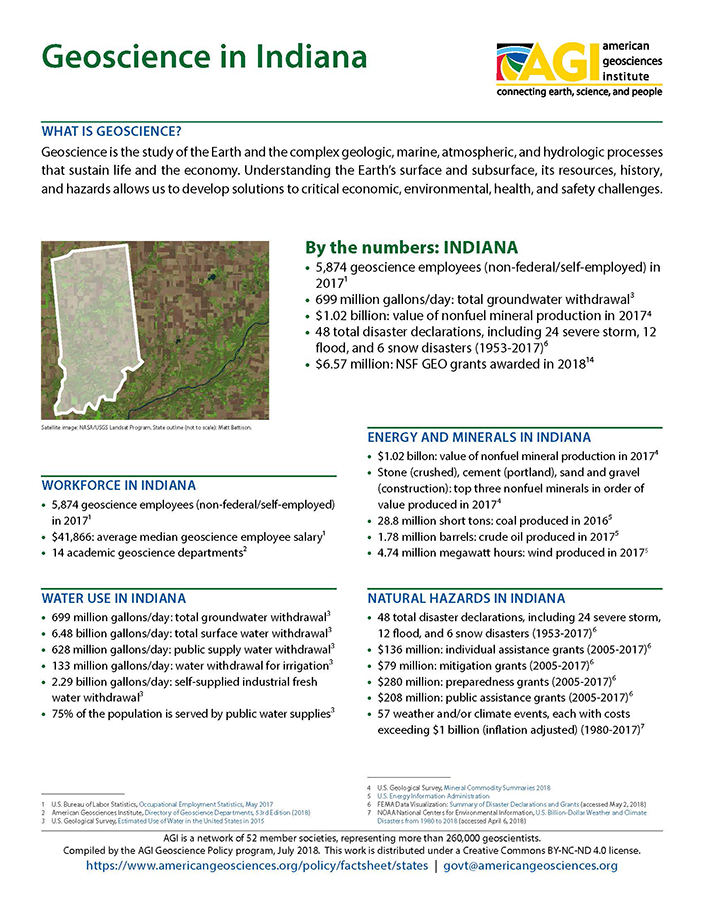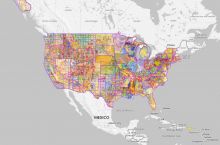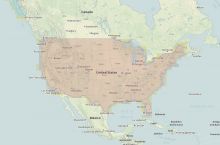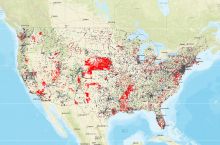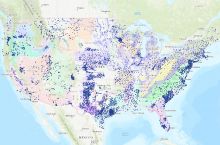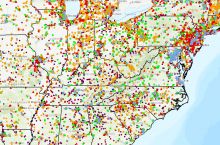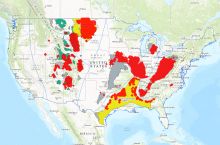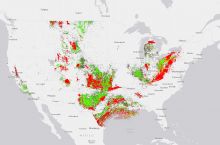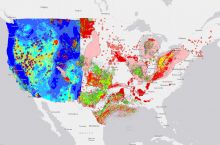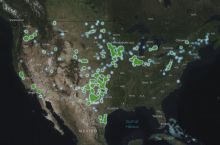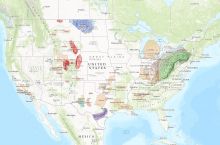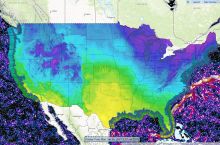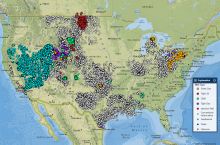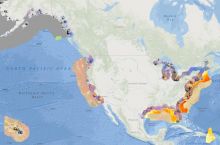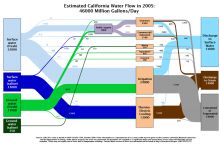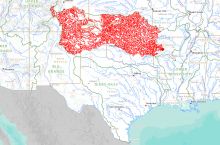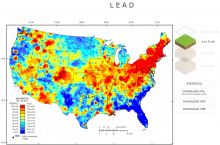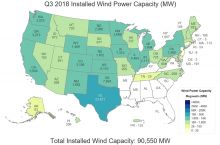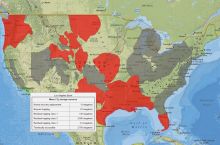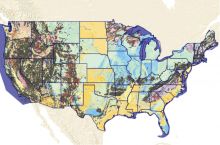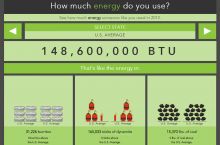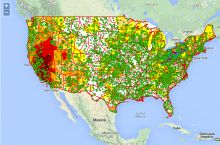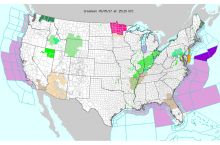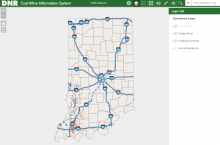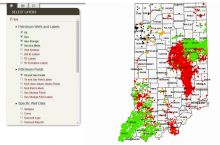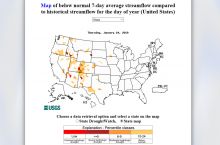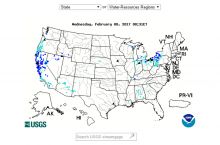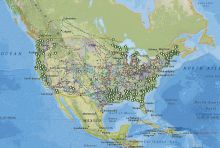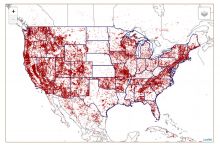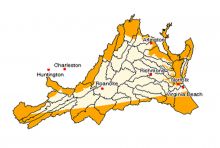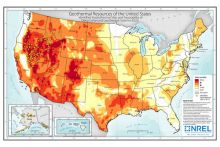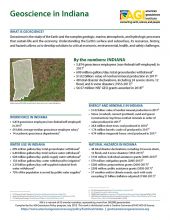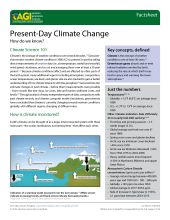By the numbers: Indiana
- 5,874 geoscience employees (excludes self-employed) in 20171
- 699 million gallons/day: total groundwater withdrawal3
- $1.02 billion: value of nonfuel mineral production in 20174
- 48 total disaster declarations, including 24 severe storm, 12 flood, and 6 snow disasters (1953-2017)6
- $6.57 million: NSF GEO grants awarded in 2018...
Agencies Working on Geoscience Issues in indiana
The Indiana Department of Environmental Management's mission is to implement federal and state regulations to protect human health and the environment while allowing the environmentally sound operations of industrial, agricultural, commercial and government activities vital to a prosperous economy.
The Indiana Department of Homeland Security works 24/7 to protect the people, property and prosperity of Indiana. For more information specific to Indiana's emergency management agencies, visit https://www.in.gov/dhs/4197.htm.
The mission of the Indiana Department of Natural Resources is to protect, enhance, preserve, and wisely use natural, cultural, and recreational resources for the benefit of Indiana's citizens through professional leadership, management, and education.
The mission of the Indiana Geological and Water Survey is to provide geologic information and counsel that contribute to the wise stewardship of the energy, mineral, and water resources of the state.

